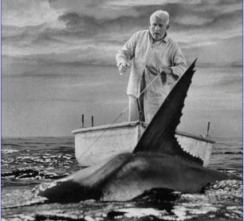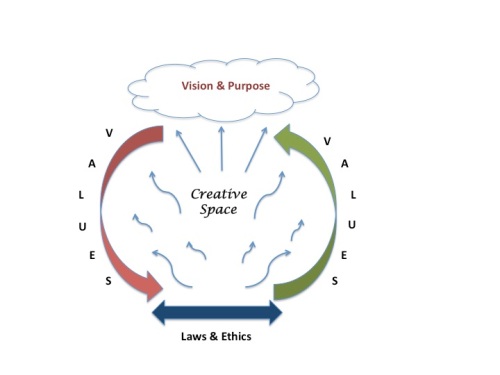This is a refreshed version of a post I wrote in March, 2010
=======================================
 When I first came to Vancouver to take up my new role as a Human Resources Consultant with a major bank, my boss and I agreed that I should go on a road trip and meet with as many corporate banking employees as possible. It was sort of an orientation thing for me and perhaps provided a chance for everyone else to give me the “once over”. Coming from Toronto, it seemed I was automatically not to be trusted.
When I first came to Vancouver to take up my new role as a Human Resources Consultant with a major bank, my boss and I agreed that I should go on a road trip and meet with as many corporate banking employees as possible. It was sort of an orientation thing for me and perhaps provided a chance for everyone else to give me the “once over”. Coming from Toronto, it seemed I was automatically not to be trusted.
On one occasion, I was to talk with a number of Corporate Account Managers. My intent was to get to know them as individuals; to learn about their ambitions; their challenges; and how we might better support their efforts. It is entirely possible though that I did not adequately declare my goal, because the first person I encountered, pulled his chair very close to mine; stared sharply into my face and said, “I make money for the bank. What do you do?”
Aside from the obvious attempt to intimidate me, his question was meant to suggest that as a person who made no direct contribution to the bottom line, whatever my purpose, I was an expense to the organization and consequently, of less value.
This is not an uncommon perspective to take, especially in large organizations. But at the time, I couldn’t help but think there was something gravely missing from this outlook.
It occurs to me now that “making money for the bank”, while an admirable outcome, did not tell me anything about what this fellow saw as his purpose. And, for me at least, there is something lost when a person seems to view his primary raison d’être as making money.
Please don’t misunderstand me. I like money as well as the next person and there is a primal need to earn it and manage it prudently. But, the purpose of most jobs, or even most businesses is probably not principally about money. It is more than likely something else, something that has to do with providing a service. Making money is an outcome of that. The amount of money earned is usually determined by the quality and consistency of the service delivered and the ability of those who deliver it, to engender loyalty among a growing constituency.
But sometimes I think we forget. We take our eye away from our fundamental purpose and allow ourselves to get fixated on the dollars. And that’s when we risk running afoul of ourselves. We become greedy. We get our priorities out of order. And then we get into trouble.
For instance, there continue to be number of “recall” situations in the automobile industry. Somewhere along the line, I suspect the affected companies have strayed from their fundamental purpose, which to me goes something like; Make good, reliable cars & keep people safe, or something to that effect. It doesn’t have to be complicated. People just have to know what it is and be able to access it when they need to re-focus.
And that is where good leadership is key. People need to know why their jobs exist; whom they are there to serve; and how it all fits together.
I think this is so because…
It helps us in making good decisions and prioritizing appropriately.
If we train ourselves to ask the question; How will doing this, (or not doing this) help me to serve my purpose? The answer will often give us the information we need to move forward.
It helps us when we tackle problems.
Often problems can start to build on each other and become so complex that we get lost in them. When this happens, it sometimes helps to get back to the basic questions like; What is my main purpose and who am I here to serve?
It helps us stay connected to the overall purpose of the organization.
Knowing why our jobs exist and how they fit into the bigger picture makes it easier to stay focused on what’s important.
It gives value to every role in the organization, not just a few.
If you nurture a culture that identifies the purpose and value of each job in relation to the overall vision and to each other, everyone in the organization has an opportunity to feel important.
It promotes good stewardship.
If we are clear about our purpose, it is that much easier to recognize and fulfill our responsibilities to those we serve.
That’s what I think anyway. What do you think?
Oh, and here’s an afterthought for you to chew on…or not.
I tend to be an idealist and often write about the way things “should be” but I find myself having to acknowledge that some people actually see “making money” as their primary purpose, and no kind of proof to the contrary could convince them otherwise. However, for most of us anyway, a purpose like that is too fragile and volatile to sustain and build on over time with the consequences of the ups and downs such a purpose suggests being way too heavy for most people to endure.

 The other day, while channel surfing, I caught a glimpse of
The other day, while channel surfing, I caught a glimpse of  When I first sat down to write today, I didn’t really know what I was going to write about but my mind kept drifting off toward
When I first sat down to write today, I didn’t really know what I was going to write about but my mind kept drifting off toward  I hate to say it…but I will. Summer is coming to a close. It feels a little sad saying adios to the hazy, crazy, sometimes lazy days of summer. And yet, to me, there is always a ‘new start’ feeling about September. I guess it must be that, for most people, summer vacation is over and it’s time to get back to work.
I hate to say it…but I will. Summer is coming to a close. It feels a little sad saying adios to the hazy, crazy, sometimes lazy days of summer. And yet, to me, there is always a ‘new start’ feeling about September. I guess it must be that, for most people, summer vacation is over and it’s time to get back to work. In life and work, there are many boundaries. For example, there are personal ones; interpersonal ones and systemic ones, just to name a few. And then there are organizational boundaries. These are the ones that intrigue me most because they are the most difficult to manage and yet can be just the thing that makes growth and success possible.
In life and work, there are many boundaries. For example, there are personal ones; interpersonal ones and systemic ones, just to name a few. And then there are organizational boundaries. These are the ones that intrigue me most because they are the most difficult to manage and yet can be just the thing that makes growth and success possible.







